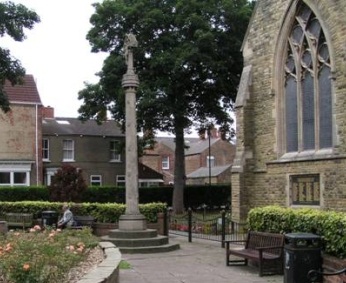Cenotaph
A cenotaph is a monument erected in honour of a person or group of people who have died. Their remains are not within or beneath the memorial; they may be buried in another cemetery, or their location may be unknown or inaccessible (victims of a mining disaster, shipwreck, etc.).
Memorials associated with notable people who have died, such as the Eleanor Crosses, have been an enduring feature of the European landscape for a long time.
War Memorials
A more recent custom is to erect a cenotaph as a war memorial, to honour those who fought and died in a battle, civilians killed in bombings, and other victims euphemistically referred to as 'collateral'.
The building of such memorials began when people wanted to celebrate a great victory; remembering the dead who secured that victory was of secondary importance. (Two famous old war memorials include Nelson's Column in London and Arc de Triomphe in Paris. They contain no names of those killed.)
Immediately after the First World War, memorials were erected in prominent and public places such as town squares, parks and church grounds. Curiously these are still called 'War Memorials' even though most local people want to remember their lost loved ones and forget the war.
Usually in countries such as Germany, there are no grand parades at war memorials, even on Volkstrauertag (day of remembrance). Similarly in Japan, there is a profoundly solemn tone at Heiwa Kinen Koen (Peace Park) on 6 August each year in Hiroshima and at the Yasukuni Shrine in Tokyo. People go there privately, quietly remembering their loved one's and praying for their souls.
We no longer live in Napoleonic times and war memorials are no longer intended to glorify war. Yet in countries that consider themselves victorious in the last two major wars, there are grand military parades with the pipe bands playing jingoistic music, and armed-forces recruitment tents near the souvenir stalls selling little national flags. Those are signs of triumphalism, which is the antipathy of those whose religion considers pride to be a sin (see the Seven Deadly Sins).
Despite what we see in movies, there is no glory in war. There is no triumphant music; only cries of pain and human suffering. War is neither glorious nor glamorous. War is absurd, ironic, tragic, and a brutal reminder of the violence that man is capable of. There is little doubt that war is undeniably evil.
Is a cross suitable for a cenotaph?
The design of a cenotaph, like all memorials, is often at the whim of the local authorities.
They may take into account the non-religious nature of the conflict, yet allow themselves to be persuaded by sponsors to use the shape of the cross.
We are reminded by Schubert's words:.
- Memorial Cross
- Veteran's Cross
- War Cross
- Cross of Sacrifice (originating from the Commonwealth War Graves Commission's Latin Cross with a superimposed sword, blade down, like the Soldier's Cross)
- Intending Cross (meaning the deceased are aspiring to go to heaven).
See also Hill of Crosses.
Schubert: Die Dokumente seines Lebens, ed. by Otto Erich Deutsh, Kassel, etc., 1964, p.320

